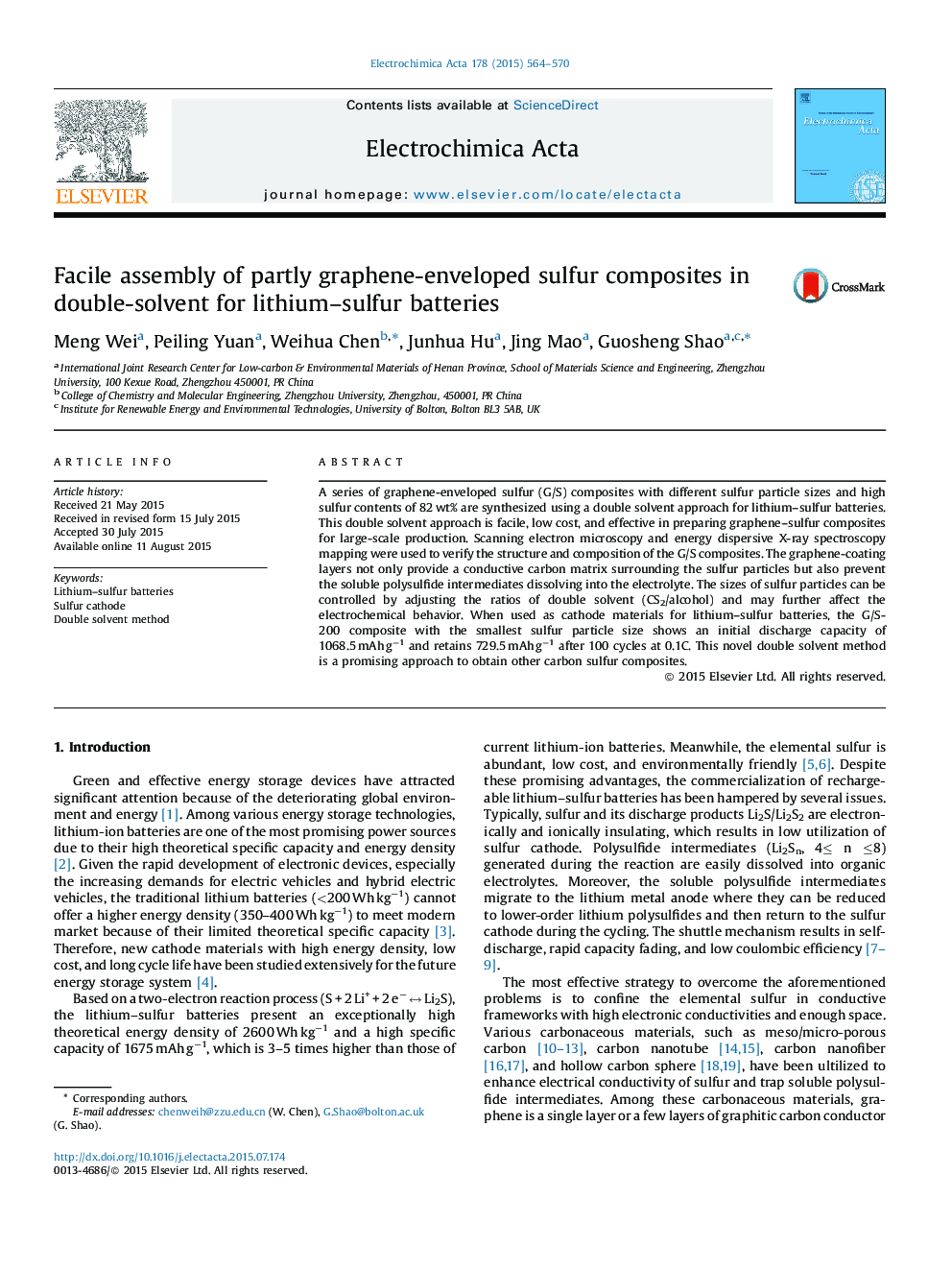| Article ID | Journal | Published Year | Pages | File Type |
|---|---|---|---|---|
| 183718 | Electrochimica Acta | 2015 | 7 Pages |
A series of graphene-enveloped sulfur (G/S) composites with different sulfur particle sizes and high sulfur contents of 82 wt% are synthesized using a double solvent approach for lithium–sulfur batteries. This double solvent approach is facile, low cost, and effective in preparing graphene–sulfur composites for large-scale production. Scanning electron microscopy and energy dispersive X-ray spectroscopy mapping were used to verify the structure and composition of the G/S composites. The graphene-coating layers not only provide a conductive carbon matrix surrounding the sulfur particles but also prevent the soluble polysulfide intermediates dissolving into the electrolyte. The sizes of sulfur particles can be controlled by adjusting the ratios of double solvent (CS2/alcohol) and may further affect the electrochemical behavior. When used as cathode materials for lithium–sulfur batteries, the G/S-200 composite with the smallest sulfur particle size shows an initial discharge capacity of 1068.5 mAh g−1 and retains 729.5 mAh g−1 after 100 cycles at 0.1C. This novel double solvent method is a promising approach to obtain other carbon sulfur composites.
